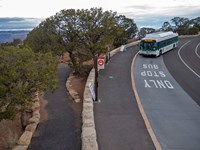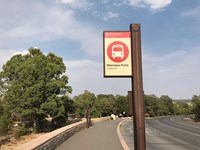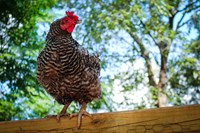- Sleeping Bear Dunes National Lakeshore (32)
- Golden Gate National Recreation Area (25)
- Eisenhower National Historic Site (21)
- Monocacy National Battlefield (21)
- Antietam National Battlefield (19)
- César E. Chávez National Monument (17)
- Homestead National Historical Park (17)
- Cuyahoga Valley National Park (16)
- Manhattan Project National Historical Park (15)
- Show More ...
- National Register of Historic Places Program (7)
- Geologic Resources Division (6)
- Technical Preservation Services (6)
- Archeology Program (5)
- Natural Resource Stewardship and Science Directorate (5)
- San Francisco Bay Area Inventory & Monitoring Network (5)
- American Battlefield Protection Program (4)
- National Center for Preservation Technology and Training (4)
- Inventory and Monitoring Division (3)
- Show More ...
Showing 732 results for farmestead ...
Glen Haven Cannery and Boat Museum
- Type: Place

By the 1900s D.H. Day owned Glen Haven, 5,000 acres around it, 5,000 cherry and apple trees, a farm with hundreds of hogs, and a massive lumber company. Day was a visionary. He could see that the demand for lumber was falling rapidly, and he would need to diversify. So he started a canning company. The Glen Haven Canning Company processed cherries, raspberries, and peaches and shipped the finished canned goods to Great Lake cities.
Evolution of Agriculture at Sleeping Bear Dunes
Horseshoe Pond Trailhead Information
Hanka Homestead Museum
- Type: Place

The Hanka Homestead was occupied by members of the Hanka family, Finnish immigrants, from 1896 until 1966. Herman Hanka settled here with his family after he was injured in a copper mining accident. The farm was originally homesteaded at a time of mass immigration from Finland to the United States. The homestead is relatively intact and unaltered from its appearance in the 1920s. This museum is an official partner of Keweenaw National Historical Park.
Window Rock Trail (Colorado National Monument)
Elizabeth Billings
- Type: Person
When even the sharpest female minds were denied ranks above "amateur”, Elizabeth Billings (1871-1944) nonetheless achieved enough to impress a modern-day botanist. Her accomplishments included cultivating various gardens, experimenting in farming, managing the family estate, and cataloging hundreds of plants.
Boyhood Farm Chicken Coop
Marching for Justice in the Fields
- Type: Article

The farm workers who marched from Delano to Sacramento represented the large, seasonal labor force, composed overwhelmingly of people of color, whose labor made California’s thriving agricultural industry possible. Although their labor produced fortunes from the soil, they were subjected to poor wages and working conditions. This article is an introduction to the issues that motivated the Delano Grape Strike and the 1966 march.
The Terrain of Farmworker Life
- Type: Article

Large-scale commercial agriculture or agribusiness has shaped the landscape of California's Central Valley for over a century. This article explores the social and economic world created by agribusiness in and around the small city of Delano, with an emphasis on the lives of the predominately Filipino, Mexican, and Mexican American farm workers and their families.
A New Era of Farmworker Organizing
- Type: Article

This article explores changes in farm work and farmworker organizing that took place in the 1960s. The end of the Bracero Program, a strike wave, and the emergence of the Black Freedom Movement, all played a role in expanding the opportunities for farmworker organizing. So too did the emergence of a new organization, the National Farm Workers Association.
Latinx Experiences at Hanford: Frank Armijo
- Type: Article

Listen to clips from an oral history interview with Frank Armijo as he shares memories growing up in Pasco, his joy and passion in the work that he accomplished at Hanford, and advice for youth. Frank Armijo’s parents were initially migrant farm workers from Texas who had met in Walla Walla. On one of the family’s work trips to the state, Frank’s dad, Rosalio, picked up additional work with a construction company that brought the family to Tri-Cities around the early-1960s.
Matthew Farm Site
Pima Point Bus Stop - Hermits Rest (Red) Route
- Type: Place

NO BUS SERVICE on Hermit Road during December, January and February. One of the few places where one can hear the Colorado River from the rim of Grand Canyon. Wait for the shuttle to pull away, then be as quiet as possible, and you might hear the faint roar of Granite Rapid far below, a sound which just barely hints at the power of a river more than 3 miles (4.8 km) away.
Monument Creek Vista Bus Stop - Hermits Rest (Red) Route
- Type: Place

NO BUS SERVICE during December, January and February. A spectacular view of Monument Creek far below and Granite Rapid on the Colorado River can be seen directly from this shuttle stop. This viewpoint is the eastern end of a section of the Greenway Trail, which accommodates both walking and bicycling, which runs west from here past Pima Point almost all the way to Hermits Rest.
Mohave Point Bus Stop - Hermits Rest (Red) Route
- Type: Place

NO BUS SERVICE during December, January and February. A two-way shuttle stop with separate buses headed both outbound (west) to Hermits Rest and inbound (east) back to the Village, Mohave Point features a spectacular view from the shuttle stop. The main viewpoint, however, is a short walk down the paved trail from the shuttle stop. Mohave Point primarily faces west, with a great view of the Colorado River far below, making this point a popular place for sunset.
Maricopa Point Bus Stop - Hermits Rest (Red) Route
- Type: Place

NO BUS SERVICE during December, January and February. Although there is not a view of Grand Canyon directly from this shuttle stop itself, a short walk from here, through the forest and along the easy, paved path is rewarded with a spectacular, open, panoramic viewpoint which extends far out from the canyon rim. Maricopa Point.
- Type: Place

In the early 1930s, the Wakefield National Memorial Association created all the buildings in the Historic Area as part of the nation's commemoration of Washington during the bicentennial of his birth. The Association constructed these buildings to be suggestive of a colonial farm complex, and did not construct them based on historical or archeological evidence of buildings that existed here in the 1700s.
- Type: Place

Piscataway Park is home to bald eagles, beavers, deer, foxes, ospreys, and many other species. To complement the surroundings, the park has, in addition to a public fishing pier and two boardwalks over fresh water tidal wetlands, a variety of nature trails, meadows, and woodland areas. The park is also home to National Colonial Farm.
- Type: Article

Faced with having to feed an expanded military and a hungry population, the US government reintroduced the idea of War Gardens from World War I. They rebranded them as Victory Gardens for World War II. World War II Victory Gardens were grown on farms, in backyards, on city rooftops, in window-boxes, on public lands, and in vacant lots.






